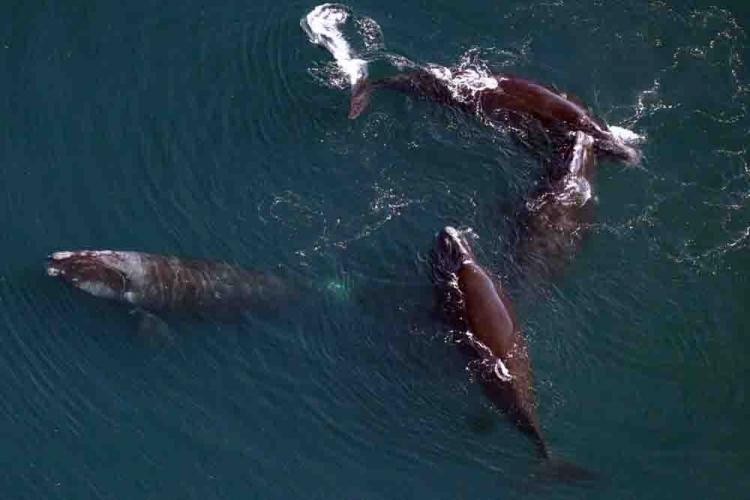Citing a recent federal court order, Maine’s Congressional delegation and Gov. Janet Mills called for the Department of Commerce to rescind its seasonal closure of the LMA 1 Gulf of Maine lobster area, saying it does nothing to protect endangered right whales.
Meanwhile the international North Atlantic Right Whale Consortium issued a revised population estimate Oct. 25, warning the species’ likely numbers dropped to 336 animals during 2020. It’s an 8 percent decline from 2019 and the lowest number in nearly 20 years, from a peak of 481 in 2011.
“We are obviously discouraged by this estimate, but quite frankly, not surprised. The right whale research and conservation communities know that while widespread efforts to change the trajectory of the species have been undertaken, they have not been enough,” said Heather Pettis, an associate scientist at the New England Aquarium’s Anderson Cabot Center for Ocean Life and the consortium executive administrator in announcing the revised estimate.
NMFS’ latest efforts at reducing the danger of fishing gear entanglements is a major component of the U.S. response. But in their Oct. 22 letter to Commerce secretary Gina Raimondo, Maine elected officials say there’s little evidence that the LMA 1 closure will do anything to accomplish that.
On Oct. 16 U.S. District Court Judge Lance Walker granted the Maine Lobstermen’s Union application for emergency relief from the closure, affecting Gulf of Maine waters from offshore Casco Bay to Mount Desert Island until January 2022. The Maine delegation echoed Walker’s opinion to making the same argument to Raimondo.
“We fully agree with the Court’s determination that ‘the record presented thus far does not indicate that right whales actually congregate in or pass through the LMA 1 Restricted Area with nearly enough frequency to render it a ‘hotspot’ for whale and buoy line co-occurrence, contrary to the agency’s characterization,” the lawmakers wrote.
“The District Court’s decision is a sound and welcome development, and underscores the many shortcomings with the Agency’s final rule. We urge you to withdraw this rule and to use whatever authorities you have to immediately resolve the LMA 1 restricted area component, which does not reflect the reality of the conditions in the Gulf of Maine.”
The letter outlined specific objections:
- “NMFS’ predictive models forecast very low-percentages of right whale presence during the closure period.”
- “Prior area closures imposed elsewhere by NMFS have been designed to coincide with the actual presence of right whales and have relied on predictable whale aggregations in specific areas and seasons.”
- “NMFS’ own data – or lack thereof in some instances – support the conclusion that right whales are present in the Northern Gulf of Maine less and less frequently as waters warm and the species’ primary food source moves further offshore and northward into colder Canadian waters.”
- “The record of known entanglements and vessel strike cases between 2010 and 2019 includes zero known incidents in LMA 1, which means there is sparse evidence to support an immediate and preemptive closure of this area.”
NMFS departed from past practice in projecting the possibility for entanglements in LMA 1, the letter says.
“The federal government claims that the LMA 1 closure from October through January in perpetuity will reduce right whale mortalities and serious injuries. NMFS’ predictive models, however, forecast very low-percentages of right whale presence during the closure period. Prior area closures imposed elsewhere by NMFS have been designed to coincide with the actual presence of right whales and have relied on predictable whale aggregations in specific areas and seasons.”
The right whale consortium’s revised estimate came at the opening of the group’s annual meeting this week.
With fishing gear entanglement and vessel strikes the foremost threats to the whales’ survival, scientists at the New England Aquarium say research shows that “body lengths of right whales have been decreasing over the past four decades, with life-threatening entanglements leaving individual animals with less energy to devote toward growth and reproduction.”
Some 86 percent of identified right whales off the U.S. coast have shown evidence of being “entangled one or more times in fishing gear,” according to the aquarium group.
“There is no question that human activities are driving this species toward extinction. There is also no question that North Atlantic right whales are an incredibly resilient species. No one engaged in right whale work believes that the species cannot recover from this,” said Dr. Scott Kraus, chair of the right whale consortium.







